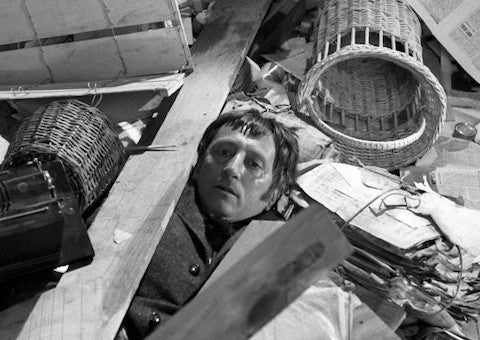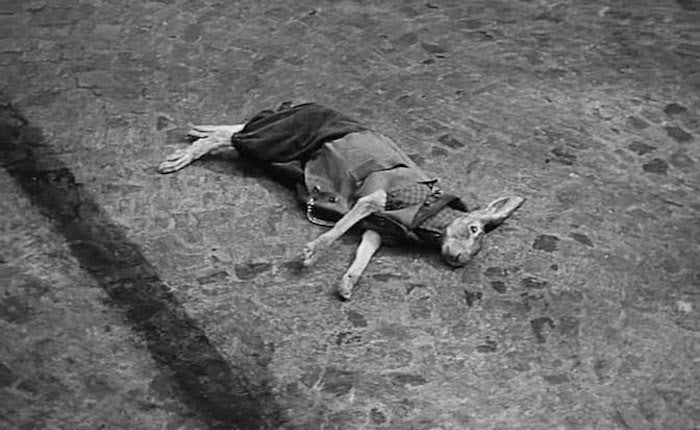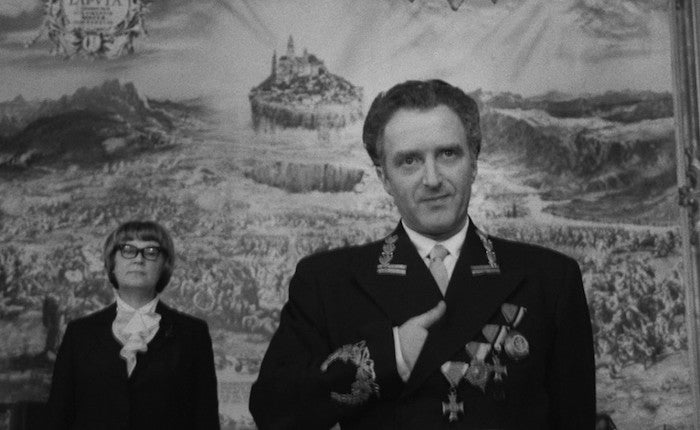
A Case for the New Hangman (1969)
As an undergraduate in my very first film course, I wrote my first term paper on the Czech New Wave, a group of films made in the brief period of liberalization in Communist Czechoslovakia, known as the “Prague Spring.” Among the directors who came to prominence, winning numerous prizes at international film festivals before Russian tanks put an end to the movement, were Jiří Menzel, Jaromil Jireš, Juraj Herz and Dušan Hanák, as well as an older generation of directors, like Ján Kadár and Karel Kachyňa. Remarkably, the Czechs won two Foreign Language Academy Awards for The Shop on Main Street (Ján Kadár and Elmar Klos, 1965) and Closely Watched Trains (Jiří Menzel, 1967), and received further nominations for The Loves of a Blonde (Miloš Forman, 1965) and The Firemen’s Ball (Forman, 1967). At the end of the semester, my professor asked to publish my paper. It ultimately didn’t happen, but it did send me on my present path. 50 years on, the Czech National Film Archive in Prague, host of the 2018 International Federation of Film Archives (FIAF) Congress, presented a New Wave series that included Herz’s macabre black comedy, The Cremator (1968), and Pavel Juráček’s masterpiece, A Case for the New Hangman (1969), the latter in a new digital restoration.

A Case for the New Hangman (1969)
Although completed after the period of so-called “normalization,” Juráček’s film is possibly the most radically surrealist film ever produced anywhere; the roots of Czech surrealism run deep, beginning with the Devěstil movement of the 1920s. A Case for the New Hangman (1969) is loosely based on the third part of Jonathan Swift’s Gulliver’s Travels, where the hero is rescued by the floating island of Laputa, then travels to Balnibarbi. The film reverses the journey, opening on a country road where Gulliver, driving a Lada, takes a detour, runs over a hare in a suit and pulls a watch from its pocket. We know we’ve fallen down a rabbit hole when his vehicle seems to take on a life of its own and crashes. From that point on, space and time, narrative logic, dream and reality no longer have meaning, as Gulliver stumbles from one non-sequitur to another, always chasing the image of his long-drowned lover. A title card says, “I’m sorry, this is not a dream.” Like Josef Škvorvecky’s novel, The Engineer of Human Souls, New Hangman mercilessly allegorizes the supposedly scientific underpinnings of Marxist-Leninism (a Rube Goldberg contraption is a “manual thinking machine”), the communist bureaucracy (a priceless mural is cut into bite-sized pieces so it can be catalogued) and the secret police (Gulliver is the object for a university seminar on interrogation techniques). When the Balnibarbi Academy of Inventors eliminates November to cut down on flu season, the film comes crashing into the Trumpian “no climate change” present. Gulliver finally escapes in the horse-drawn wagon of the village idiot, who tells him he is lucky to have a watch, even if it runs backwards. Tragically, Juráček was banned and forbidden from ever making another film, obviously because the Stalinist cultural bureaucrats resented the fact that the film had been made on their watch. It was not shown until 1990.

A Case for the New Hangman (1969)
No less surrealistic, Juraj Herz’s The Cremator (1968) opens with a breathtaking pre-credits sequence, a montage of extreme close-ups of human and animal parts, especially eyes, as Karl Kopfrkingl relates in his soothing, funeral parlor voice, how he fell in love with his wife of 19 years at the zoo. Next, the credits sequence consists of photomontages of naked human limbs, eyes and other body parts that keep the audience off balance. In the film that follows, Herz continuously disorients the viewer by utilizing close-ups that jump through space and time, and fisheye lenses that reflect the cremator’s (and the country’s) diseased mind. The narrative concerns a cremator who believes, in a perversion of Tibetan Buddhism, that his work is one of liberation, freeing souls into the ether. But he is also an overly ambitious petty bourgeois who repeats moral platitudes about faithfulness to his wife, while consorting regularly with prostitutes and eventually murdering and cremating his gay son and half-Jewish wife, so that he can achieve professional success as chief cremator for the Nazis. His descent into madness thus parallels the Czech middle class’ slide into collaboration with the Nazis after the creation of the Protectorate of Bohemia and Moravia. Indeed, his marriage lasts about as long as the first Czechoslovak Republic (1818-1938). Herz’s allegorical intensions are buttressed by his lead actor, Czech comedian Rudolf Hrušínský, who became famous as the star of The Good Soldier Schweik (1956) from Jaroslav Hašek’s comic novel about the Czech national character.

The Cremator (1969)
Czech black comedy does not get any darker than this, and the ironies of Czech history were certainly not lost on me: while my father was incarcerated by the Nazis and later active in the Underground, my grandfather was a director of the engineering company ČKD (Českomoravská-Kolben-Daněk), which was converted to a tank manufacturer, thereby keeping the Nazi war machine running.
< Back to Archival Spaces blog






 Mobile Navigation
Mobile Navigation

